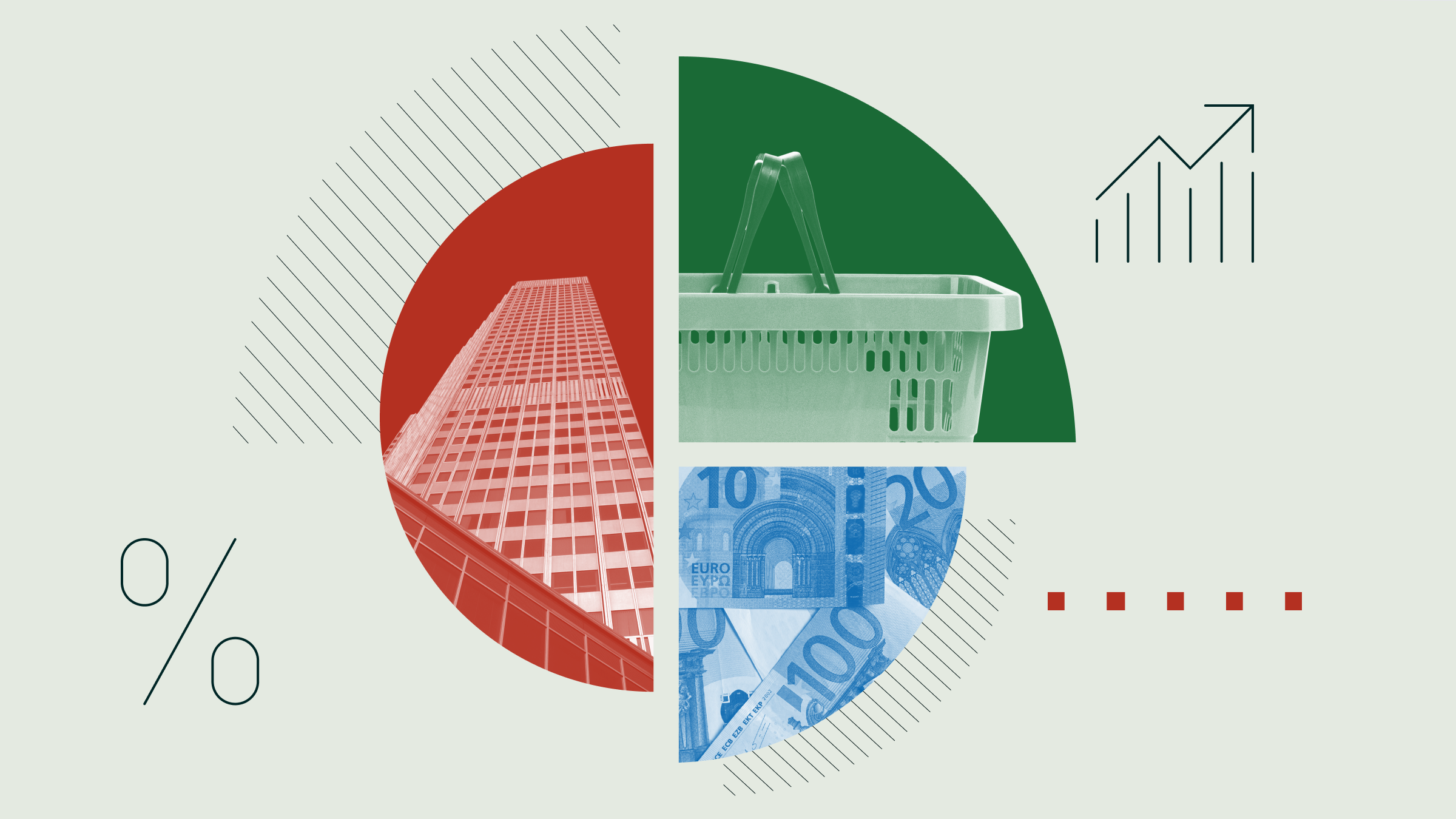
While high-octane stocks that double overnight often get a lot of the limelight, they are often a guaranteed way to ensure you don't sleep at night. Not all investors want a rollercoaster ride. So we went looking for high-quality stocks that don't cause much trouble, that are strong and dependable, and that allow us to rest easy in our investments.
To find stocks to fit the bill, we screened for the following:
Morningstar Economic Moat Ratings of ‘Wide’: Firms with wide moats have unmatched advantages that should allow them to fend off their competitors and outearn their costs of capital for the next 20 years. By their very natures, wide-moat companies are reliable in terms of their businesses--think of them as "steady-Eddies."
Stable or Positive Moat Trends: To qualify, a company needs to be growing its competitive advantages, not facing impossible-to-overcome headwinds that may ultimately threaten its moat.
Low Uncertainty: Such companies enjoy sales predictability, modest operating and financial leverage, and limited exposure to contingent events. As a result of these factors, we can more confidently estimate the future cash flows of these companies--and therefore have high confidence in our fair value estimates.
Exemplary Morningstar Capital Allocation Ratings: Companies that earn the highest marks for stewardship are led by managers who are in shareholders' corners. These managers are exceptional stewards of shareholder capital--and that matters, because capital-allocation decisions ultimately lead to the creation or destruction of value for shareholders.
Only six stocks made the cut. But remember: even reliable companies can be overpriced and therefore vulnerable from a price perspective. Valuation matters. So, while none of the stocks on the list are buys today according to our metrics, they're worth keeping an eye on.
Stocks to Watch - What Our Analysts Say
Coca-Cola (KO)
"Coca-Cola's ubiquity and brand resonance in the nonalcoholic beverage category has been going strong for over 130 years, and we see structural dynamics that will ensure this persists. Despite competing in a mature industry, the firm is adequately exposed, either directly or indirectly, to growth vectors such as premium water and energy drinks. Moreover, we believe Coke will be able to continue extracting incremental value growth from the carbonated soft drink, or CSD, market.
"The runway for growth is supported by ample room for share gains as well as geographic tailwinds. We estimate Coke derives more than 40% of sales from developing or emerging economies with burgeoning middle classes and low per-capita CSD consumption. We expect commercial drinks will become a larger portion of beverage consumption globally, and see the company executing against each of its market-specific strategies.
"Coke's future trajectory is not without risk, as it faces Covid-19 disruption, secular headwinds in terms of consumer sentiment, and well-capitalizsd rivals. Still, with a more aligned and technologically capable distribution system, digitization initiatives to drive engagement and operational efficiency, and vast financial resources, the firm is more than equipped to defend its turf. Ultimately, Coke's overarching goal is to put drinks in more hands in more places more quickly than any competitor. We believe this pithy synopsis represents the crux of the firm's competitive positioning, underpinned by its cost advantage and intangible assets."
Nicholas Johnson, analyst
Procter & Gamble (PG)
"It wasn't long ago that Procter & Gamble was dogged for its lackluster revenue growth; however, after posting its 11th consecutive quarter of at least mid-single-digit organic revenue growth, these concerns are now a distant memory. We acknowledge that P&G's essential, trusted items are being propped up by the pandemic, given consumers' proclivity for personal and home cleaning and health-related fare. But we think P&G's improving performance would have happened even without the pandemic, thanks to its radical decision more than six years ago to materially prune its brand mix (cutting more than 100, leaving it with just 65) to focus its resources on its highest-return opportunities as a way to more nimbly respond to evolving consumer trends. In this manner, it adopted a more holistic approach to brand investing across its business (consisting of how a product performs, the packaging, brand messaging, execution in stores and online, and the value a product offers for its retail partners and end consumers) that we think should support its wide moat long term.
"But even as its top line appears healthy, P&G now faces unrelenting commodity cost inflation that management qualitatively pegged as some of the most significant in some time. In response, P&G intends to implement mid- to high-single-digit price increases across its U.S. baby, feminine, and adult incontinence segments this fall. We're cognizant that consumers could balk at price hikes by trading down or out of certain categories. However, we think the degree of inflation combined with P&G's innovation mandate (rooted in consumer-valued new fare) should make such increases more palatable. As evidence, pricing has only detracted from the firm's top line once in the past 16 years. Further, we're encouraged that P&G is leaning into brand spending to illustrate the value its products offer consumers as opposed to turning off the spigot to preserve profits in this uncertain climate. This aligns with our forecast for P&G to direct around 3% and 11% of sales long term to research and development and marketing, respectively, up from 2.7% and 10.3% on average the past three years, which we view as prudent."
Erin Lash, director
PepsiCo (PEP)
"For many consumers, the Pepsi trademark elicits images of cola containers and curated ads extolling the brand's taste superiority versus Coke. While PepsiCo is still a beverage behemoth, its exploits now extend beyond this industry, with Frito-Lay and Quaker products accounting for over half of sales and over 65% of profits, by our estimate. A diversified portfolio across snacks and beverages is the crux of many of the company's competitive advantages, in our view. Though management missteps have stymied performance in the past, the confluence of better execution and benefits inherent to its integrated business model has allowed Pepsi to reaccelerate profitable growth, and we see plenty of room to run.
"Pepsi's growth trajectory is not without risk, as the company faces secular headwinds such as shifts in consumer behavior. Additionally, shifting go-to-market dynamics, such as online commerce that encourages real-time price comparisons and obviates the extent of Pepsi's retail distribution advantage, allow for more nimble and aggressive competition. Still, we believe that structural dynamics emanating from Pepsi's scale, the cachet of its brands, and the breadth of its portfolio, which support its wide moat, should enable the company to maintain and augment its competitive positioning."
Nicholas Johnson, analyst
Colgate-Palmolive (CL)
"While headwinds abounded last year (stemming from the coronavirus and subsequent macro and political angst), Colgate-Palmolive navigated the uncertain landscape quite astutely. With CEO Noel Wallace at the helm, the wide-moat household and personal-care operator's playbook has centered on elevating research, development, and marketing spending (on its core mix, within adjacent categories, and throughout the digital realm) and responding to evolving consumer preferences more expeditiously (bringing products to market in just six to 12 months in some cases, down from 18-36 months historically). The prudence of this course was evidenced as organic sales shot up 7% in fiscal 2020.
"Even if the economic landscape remains challenged and promotional angst intensifies, we believe Colgate's portfolio will prove resilient (following the mid- to high-single-digit quarterly gains during the 2008-09 recession). And we're encouraged that management's rhetoric suggests a commitment to investing in product innovation (at the premium and lower-priced end of its range) to prompt consumers to stay within its brand pillars regardless of the economic climate."
Erin Lash
Dominion Energy (D)
"Dominion Energy changed its name from Dominion Resources in 2017. More importantly for investors, however, the company also made a strategic pivot. Since 2010, Dominion has focused on the development of projects with conservative strategies, exited the exploration and production business, sold or retired no-moat merchant energy plants, and made plans for significant investments in moaty utilities infrastructure.
"About 90% of earnings will be from regulated electric and gas utilities with constructive state regulation in Virginia, Utah, Ohio, West Virginia, and the Carolinas following the sale of the gas transmission and storage assets. The balance of earnings will come from contracted assets with long-term agreements with mostly investment-grade counterparties.
"Dominion increased its dividend 17 consecutive years before a 33% cut in fourth-quarter 2020. A dividend increase of 0.8% was declared for first-quarter 2021 and represents a payout ratio of approximately 65% of our 2021 earnings estimate. We believe Dominion's dividend yield and earnings growth outlook could deliver high-single-digit returns through this decade and beyond."
Charles Fishman, analyst
Clorox (CLX)
"The COVID-19 outbreak has left consumers scouring the shelves for Clorox's fare, leading to a pronounced bump in near-term sales. This has been quite acute in its cleaning mix (about 40% of sales), which soared at a double-digit clip on an underlying basis in each of the past three quarters. We don't think this pace will persist, but we also don't think this sales momentum is limited to cleaning. Even if volumes decelerate as shelter-in-place initiatives are lifted and consumers gradually increase their consumption of food away-from-home, we think Clorox has laid out a solid playbook (inclusive of innovation and marketing to more effectively align with consumer trends) that should steady the grilling business over time. Combined, we continue to forecast 3% annual growth in the health and wellness and household segments (67% of sales) longer term.
"Regardless of the economic backdrop, we don't expect that Clorox will ratchet back brand spend. More specifically, Clorox has long targeted to garner 3 points of annual sales growth from newly launched fare, and we think this focus will continue to contribute to its unwavering competitive position. Further, we are encouraged by management's staunch commitment to funnel additional resources to market its brands. We view this spend as a prudent means to tether its relationships with retail partners and support its brand mix at the shelf.”
Erin Lash, director





















